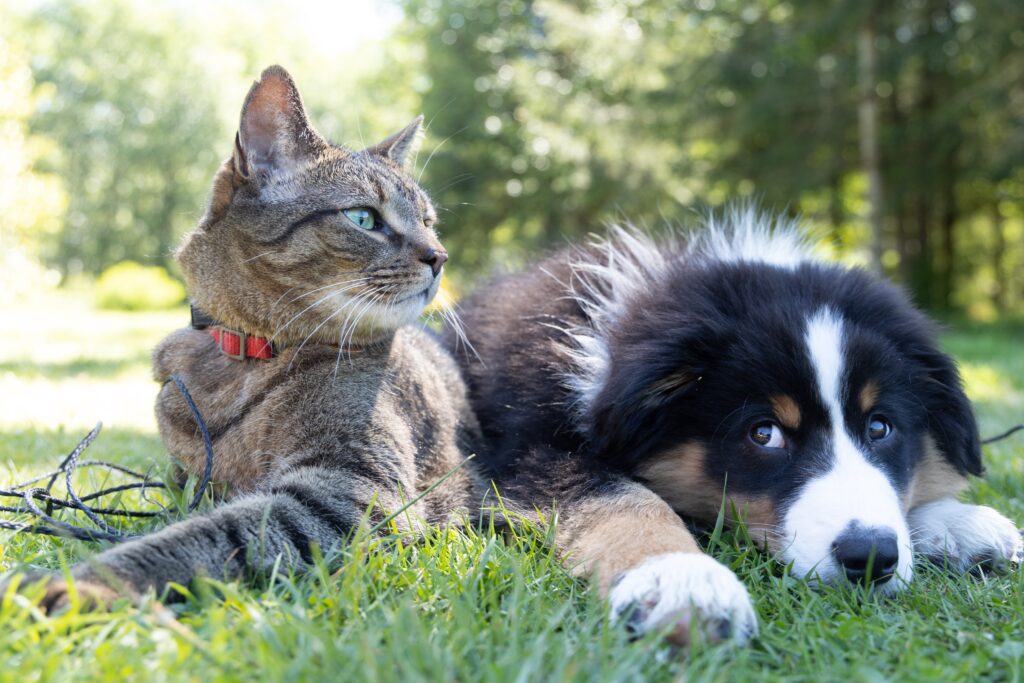
Introduction
Pets bring joy, companionship, and comfort to our lives. They become cherished members of our families, offering unwavering love and loyalty. But have you ever wondered what will happen to your beloved pets when you’re no longer there to care for them? This is where a pet trust comes into play, ensuring that your furry friends receive the love and attention they deserve even after you’re gone.
Section 1: Understanding Pet Trusts
When we think of estate planning, we often envision wills, trusts, and other legal instruments designed to distribute our assets among human beneficiaries. However, pets, with their unique needs and requirements, deserve special consideration. This is where pet trusts come into play.
A pet trust is a legally recognized document that ensures the continued care and well-being of your pets in the event of your disability or passing. Unlike a traditional will or bequest, which may not provide sufficient detail or guarantees regarding your pet’s care, a pet trust offers a tailored solution. It designates specific individuals to oversee your pet’s care, allocates funds for their maintenance, and provides a clear framework for their future.
The History and Purpose of Pet Trusts
Pet trusts might seem like a relatively recent development, but their origins can be traced back to ancient civilizations. The idea of providing for animals in one’s will has a long and storied history. The ancient Egyptians, known for their reverence for cats, often included provisions for their feline companions in their wills, ensuring that these animals received proper care and protection.
The modern concept of a pet trust, as we know it today, began to gain traction in the United States in the late 20th century. This shift in thinking was driven by a growing awareness of the legal and ethical issues surrounding pet ownership and care. Increasingly, people recognized that pets are not mere property; they are sentient beings with unique needs and emotions.
The primary purpose of a pet trust is to address these needs comprehensively. It ensures that your pets continue to enjoy a high quality of life by providing for their daily care, medical expenses, and other requirements. Additionally, a pet trust can help you maintain control over the circumstances of your pet’s life, even when you can no longer be there to oversee it personally.
So, how can you create a pet trust that safeguards your pet’s future? In the following sections of this guide, we’ll explore the key components of pet trusts, including the parties involved, funding considerations, and the steps to create a legally binding trust document. By the end, you’ll have a comprehensive understanding of how to ensure your pet’s well-being long after you’re gone.
Section 2: The Parties Involved
Creating a pet trust is not a one-person task; it involves several key parties, each with distinct roles and responsibilities. Understanding these roles is crucial to ensure the effective implementation of your pet trust.
The Grantor: You, the Pet Owner
As the grantor, you are the person establishing the pet trust. You’ll be the one setting the terms, specifying your pet’s care requirements, and providing the initial funding for the trust. Your love and commitment to your pets drive this entire process. You’ll also be responsible for appointing the trustee and caregiver(s) for your pets.
The Trustee: Guardian of the Trust
The trustee plays a pivotal role in the pet trust. They are legally responsible for managing the trust funds and ensuring that the resources are used exclusively for the benefit of your pets as outlined in the trust document. The trustee acts as a fiduciary, meaning they must act in the best interests of your pets. It’s essential to choose a trustee you trust implicitly, as they will have significant control over your pet’s financial well-being.
The Caregiver: Hands-On Care Provider
The caregiver, also known as the custodian or caretaker, is responsible for the day-to-day care of your pets. This includes feeding, grooming, exercise, and ensuring your pets’ overall well-being. The caregiver is the person who will be directly interacting with your pets, providing the love and attention they need. Like the trustee, selecting a caregiver who is not only willing but also capable of caring for your pets is paramount.
Choosing the Right Individuals for These Roles
Selecting the right individuals to fulfill these roles is one of the most critical decisions you’ll make when creating a pet trust. Here are some key considerations:
- Trustworthiness: All parties involved should be trustworthy and committed to your pet’s well-being. The trustee, in particular, should have a strong track record of financial responsibility.
- Availability: Ensure that the caregiver has the time and availability to provide proper care for your pets. Discuss their willingness to take on this responsibility.
- Expertise: Consider the specific needs of your pets. If your pets have special medical requirements or behavioral issues, look for caregivers with relevant expertise.
- Backup Plans: Life can be unpredictable. Make sure to outline contingency plans in your trust document. What happens if the primary caregiver or trustee is unable to fulfill their role?
- Legal and Financial Knowledge: The trustee should have a good understanding of the legal and financial aspects of managing a trust. They should be prepared to handle accounting, record-keeping, and reporting.
Once you’ve carefully chosen the grantor, trustee, and caregiver(s), it’s crucial to have open and honest discussions with them. Make sure they fully understand their roles and responsibilities, and that they are willing to take on these roles if and when the need arises.
In addition to these key parties, you may also want to involve a legal professional experienced in estate planning to ensure that your pet trust is legally sound and that it aligns with the laws in your jurisdiction. This additional layer of expertise can provide you with peace of mind, knowing that your wishes will be carried out effectively.
Section 3: Funding the Pet Trust
Now that we’ve covered the key parties involved in a pet trust, it’s time to turn our attention to the financial aspects. Funding your pet trust is a critical step in ensuring that your furry friend receives the care and attention they deserve after you’re no longer able to provide it yourself.
Determining the Appropriate Amount to Fund the Trust
The first question you might have is, “How much should I fund my pet trust?” The answer depends on various factors, including your pet’s age, breed, health, and expected lifespan, as well as the standard of living you wish to maintain for them.
Here are some key considerations:
- Lifetime Care: Consider the estimated cost of providing for your pet over their lifetime. This includes expenses like food, grooming, veterinary care, and any special needs or medications.
- Emergency Funds: Pets can experience unexpected health issues or accidents. It’s wise to include an emergency fund in your pet trust to cover unexpected medical expenses.
- Caregiver Compensation: If you expect your caregiver to devote significant time and effort to your pet’s well-being, you may want to allocate funds to compensate them for their efforts. Discuss this with your chosen caregiver to determine a fair compensation arrangement.
- Inflation and Investment: Account for inflation when calculating expenses, and consider whether you want the trust to invest its assets to potentially grow over time.
Funding Options for Your Pet Trust
There are several ways to fund your pet trust, and the choice depends on your financial situation and preferences:
- Lump Sum Funding: This involves transferring a one-time lump sum of money or assets into the trust. This can be from savings, a life insurance policy, or the sale of assets.
- Periodic Payments: Some individuals prefer to fund the trust incrementally, through periodic contributions from their income or assets. This can be particularly useful if you expect your pet’s needs to change over time.
- Life Insurance: You can designate the pet trust as the beneficiary of a life insurance policy, ensuring a substantial payout upon your passing. This can provide a significant source of funding.
- Property or Assets: If you have valuable assets, such as a home or investments, you can specify in your trust document that these assets should be sold and the proceeds added to the trust.
- Combination: Many pet owners choose a combination of these funding methods to ensure that their pet trust is adequately funded throughout their pet’s life.
Regardless of the funding method you choose, it’s essential to work closely with a qualified attorney who specializes in estate planning and pet trusts. They can help you structure the trust document to ensure that your wishes are carried out precisely and that the funds are managed responsibly.
Once the trust is funded, the trustee will have the legal responsibility to manage these resources and disburse them according to the trust’s instructions. Regular communication between the grantor, trustee, and caregiver is vital to ensure that the trust continues to meet your pet’s evolving needs.
Section 4: Creating the Trust Document
Now that you’ve determined the key parties involved and how you’ll fund your pet trust, it’s time to delve into the heart of the matter: creating the trust document. This legally binding document outlines your wishes for your pet’s care, financial provisions, and any specific instructions that will guide the trustee and caregiver in fulfilling their roles.
Steps to Create a Legally Binding Pet Trust Document
- Consult with an Attorney: The first and most crucial step is to consult with an attorney experienced in estate planning and pet trusts. They will help you navigate the legal intricacies of creating a pet trust in your jurisdiction and ensure that your trust document complies with all relevant laws.
- Identify Your Pets: Clearly specify the pets that the trust will cover. Provide detailed descriptions, including names, breeds, ages, and any distinguishing features. You may also include photographs for easy identification.
- Designate the Caregiver: In your trust document, name the caregiver or caregivers responsible for your pets’ day-to-day care. Specify their roles and responsibilities, such as feeding schedules, exercise routines, and any special care instructions.
- Appoint the Trustee: Detail the responsibilities of the trustee, including managing the trust’s funds, making financial decisions for your pets’ benefit, and ensuring compliance with your wishes as outlined in the trust.
- Funding Provisions: Clearly state how the trust will be funded, whether through a lump sum, periodic payments, or another method. Define how these funds should be used, including expenses for food, veterinary care, grooming, and any other pet-related costs.
- Contingency Plans: Anticipate and address potential scenarios that could affect your pet’s care. What happens if the caregiver becomes unable to fulfill their role? Or if the trustee is no longer able to serve? Outline these contingencies in your trust document.
- Medical History and Care: Include detailed information about your pets’ medical history, including vaccinations, medications, and any known allergies or health conditions. Specify your preferences for their medical care, including routine check-ups and emergency situations.
- Quality of Life Standards: Define the quality of life standards that you expect for your pets. This could include their living arrangements, exercise needs, and social interactions.
- End-of-Life Decisions: Address the sensitive topic of end-of-life decisions for your pets. Specify your preferences regarding euthanasia and any special arrangements for their final resting place.
- Regular Reviews: Establish a schedule for regular reviews of the trust document. As circumstances change, you may need to update the trust to reflect new information or preferences.
- Legal Provisions: Include any legal provisions required by your state or jurisdiction to ensure the trust’s validity. Your attorney will guide you in this regard.
- Executor or Guardian: Appoint an executor or guardian who will oversee the trust’s administration and ensure that your wishes are carried out. This person can also advocate for your pets if there are disputes.
The Role of Legal Counsel
It cannot be emphasized enough that consulting an attorney is an essential step in creating a pet trust. Laws governing trusts, especially pet trusts, can vary from state to state and country to country. An attorney will help you navigate these legal complexities and ensure that your trust is legally sound.
Communicate Your Wishes
Once your pet trust document is complete, it’s vital to communicate your wishes to all parties involved. Meet with your chosen trustee, caregiver(s), and any other relevant individuals. Provide them with copies of the trust document and walk them through its contents. Clarify any questions or concerns they may have and ensure that everyone is on the same page regarding your expectations for your pets’ care.
Section 5: Choosing Caregivers
Selecting the right caregiver for your beloved pets is one of the most critical decisions you’ll make when creating a pet trust. The caregiver is the person who will provide daily care, love, and attention to your pets, ensuring their quality of life remains as close as possible to what they’ve known under your care.
Considerations for Choosing a Caregiver
- Trust and Compatibility: The caregiver should be someone you trust implicitly and who shares a strong bond with your pets. Compatibility in terms of personality and lifestyle is essential, as it will ease the transition for your pets.
- Availability: Ensure that the caregiver has the time and availability to dedicate to your pets. Consider factors like work schedules, travel commitments, and other responsibilities.
- Pet Experience: Look for caregivers who have experience with the type of pets you own. If your pets have specific needs or medical conditions, experience in handling these situations is crucial.
- Location: The caregiver’s location should be convenient for you and your pets. Proximity to your current residence or another designated location is ideal.
- Backup Plans: Life can be unpredictable. Discuss and outline contingency plans in your trust document. What happens if the primary caregiver is unable to fulfill their role due to illness, relocation, or other unexpected circumstances?
- Willingness to Learn: Ensure that the caregiver is willing to learn about your pets’ needs, routines, and preferences. Share information about your pets’ medical history, dietary requirements, exercise routines, and any behavioral quirks.
Creating a Comprehensive Care Plan
To ensure your pets receive consistent and loving care, it’s essential to create a comprehensive care plan in collaboration with your chosen caregiver. This plan should include:
- Feeding Schedule: Detail your pets’ dietary needs, including specific brands of food, portion sizes, and any dietary restrictions.
- Exercise and Playtime: Describe your pets’ exercise routines, favorite activities, and how often they should engage in physical and mental stimulation.
- Medical Care: Provide information about your pets’ medical history, including vaccinations, medications, and any known health issues. Specify how often they should visit the veterinarian and the preferred veterinary clinic.
- Grooming and Hygiene: If your pets require regular grooming, bathing, or special care, outline these procedures and schedules.
- Socialization: Describe your pets’ social needs, including interactions with other animals and people. Share information about their likes and dislikes when it comes to social engagements.
- Emergency Contact Information: Provide the caregiver with a list of emergency contacts, including your veterinarian’s contact information, trusted neighbors, and friends who are familiar with your pets.
Preparing the Caregiver
Once you’ve chosen a caregiver and outlined the care plan, it’s crucial to prepare them for their role. Here are some steps to consider:
- Trial Period: If possible, arrange a trial period where your pets spend time with the caregiver while you’re still available to provide guidance and answer questions.
- Training: If your pets have specific training needs, ensure that the caregiver is trained in the necessary commands and techniques. Consider enrolling them in a positive reinforcement training class together.
- Documentation: Provide the caregiver with copies of all relevant documents, including your pet’s medical records, identification (such as microchip information), and your trust document.
- Communication: Establish open lines of communication with the caregiver. Encourage them to reach out with any questions or concerns, and schedule regular check-ins to assess your pets’ well-being.
- Financial Considerations: Ensure that the caregiver understands how the trust works, including how funds will be disbursed for your pets’ care. Discuss compensation if applicable.
Choosing a caregiver for your pets is a decision that requires careful thought and consideration. It’s not only about finding someone who is willing but also someone who is genuinely capable and committed to providing the best possible care for your pets in your absence.
Section 6: Monitoring and Accountability
Creating a pet trust is a proactive step to ensure the well-being of your pets in your absence. However, it’s equally essential to establish mechanisms for monitoring and accountability to ensure that your wishes are being fulfilled effectively. Let’s explore how you can achieve this crucial aspect of pet trust management.
Regular Check-Ins
Maintaining open lines of communication with your chosen caregiver and trustee is essential. Schedule regular check-ins to discuss your pets’ well-being, any changes in their health or behavior, and to address any questions or concerns. These check-ins can help identify and resolve issues promptly, ensuring that your pets receive the best care possible.
Reporting Requirements
Consider establishing reporting requirements in your trust document. These requirements can include financial reporting by the trustee, such as providing an annual summary of expenses related to your pets’ care. Additionally, request periodic updates from the caregiver regarding your pets’ health, activities, and any significant developments.
Addressing Issues and Changes in Circumstances
Life is dynamic, and circumstances can change. It’s essential to outline in your trust document how potential issues or changes will be addressed. For example:
- Caregiver Changes: If the primary caregiver is no longer able to fulfill their role, specify how a replacement caregiver will be selected. Ensure that this process is documented and follows your guidelines.
- Trustee Changes: Similarly, establish procedures for selecting a new trustee if the current trustee can no longer serve. This process should be transparent and consistent with your wishes.
- Emergency Situations: Discuss how emergency situations will be handled, both for your pets and for the management of the trust’s funds. Having a plan in place for unexpected events is crucial.
Trustee Accountability
The trustee plays a significant role in managing the financial aspects of the pet trust. To ensure accountability, consider the following:
- Financial Record-Keeping: The trustee should maintain meticulous financial records related to the trust’s expenses and income. These records should be available for review by the grantor and, if necessary, by legal authorities.
- Third-Party Oversight: Some pet trusts involve appointing a third-party overseer, separate from the trustee, to review and approve financial disbursements. This additional layer of oversight can enhance transparency and accountability.
- Legal Responsibilities: The trustee has a fiduciary duty to act in the best interests of the pets. If they fail to do so or breach their responsibilities, legal action can be taken to rectify the situation.
Section 7: Tax Considerations
Understanding the tax implications of your pet trust is vital for effective estate planning. While pets are not taxable entities, the funds held within a pet trust may have tax consequences. Here are some key considerations:
- Income Tax: The income generated by the trust’s assets may be subject to income tax. Your attorney can advise you on strategies to minimize the tax impact, such as investing trust assets tax-efficiently.
- Gift Tax: If you fund the pet trust with a significant amount, it may trigger gift tax implications. Consult with a tax professional to understand your specific situation and explore ways to mitigate gift tax liabilities.
- Estate Tax: The assets in the pet trust may also be subject to estate tax upon your passing. Estate tax laws vary by jurisdiction, so it’s crucial to work with an attorney well-versed in local regulations.
- Qualified Trustee Expenses: Some jurisdictions allow for the deduction of certain qualified expenses related to the trust, which can reduce the overall tax burden.
To navigate these tax considerations effectively, consult with both an attorney experienced in pet trusts and a qualified tax professional. They can help you structure the trust to minimize tax liabilities while ensuring that your pets receive the necessary care.
Section 8: Common Challenges and Solutions
Creating a pet trust is a commendable way to ensure your pets receive proper care when you can no longer provide it. However, like any legal arrangement, pet trusts can come with their own set of challenges. Let’s explore some common hurdles and practical solutions to address them.
Challenge 1: Identifying Trustworthy Parties
Solution: Thoroughly vet potential caregivers, trustees, and overseers. Seek references, assess their commitment, and ensure they have the knowledge and time to fulfill their roles. Consider backup options in case any of these parties are unable to continue.
Challenge 2: Changing Circumstances
Solution: Build flexibility into your trust document. Outline clear procedures for selecting replacements if necessary, both for caregivers and trustees. Regularly review and update the trust to reflect any changes in your pets’ needs or your circumstances.
Challenge 3: Disputes and Misunderstandings
Solution: Open communication is key. Encourage all parties to discuss concerns openly and honestly. If disagreements persist, consider involving a mediator or attorney to facilitate resolution.
Challenge 4: Funds Mismanagement
Solution: Choose a responsible trustee and consider third-party oversight. Require detailed financial reporting and maintain a contingency fund for unexpected expenses.
Challenge 5: Legal and Tax Complexities
Solution: Work with experienced professionals. Consult an attorney well-versed in pet trusts and a tax expert who can help navigate legal and tax considerations effectively.
Section 9: Alternatives to Pet Trusts
While pet trusts are a powerful tool for ensuring your pets’ future well-being, they might not be the best fit for everyone. Here are some alternative options to consider in your estate planning:
1. Conditional Bequests: You can include provisions in your will that specify that certain assets or funds should be bequeathed to someone on the condition that they care for your pets.
2. Pet Protection Agreements: These agreements are legally binding documents that outline your pets’ care instructions and designate a caregiver. While not as robust as pet trusts, they offer a level of protection for your pets.
3. Charitable Donations: Consider leaving a bequest to a reputable animal welfare organization in your will. Many of these organizations have programs for caring for pets when their owners pass away.
4. Letter of Intent: Even if you don’t create a pet trust, you can write a letter of intent detailing your pets’ care instructions and information about their habits, likes, and dislikes. This can be a valuable resource for future caregivers.
5. Traditional Wills: While not as comprehensive as pet trusts, you can still include provisions for your pets in your will. This can specify who should care for your pets and allocate funds for their care.
It’s important to remember that the best option for you depends on your unique circumstances, your pets’ needs, and your estate planning goals. Consulting with an attorney specializing in pet trusts and estate planning can help you determine the most suitable approach.
Section 10: Review and Update
Creating a pet trust is a proactive and caring step toward ensuring your pets receive the best care possible even when you’re no longer there. However, it’s not a “set it and forget it” endeavor. Regularly reviewing and updating your pet trust is crucial to adapt to changing circumstances and ensure that your pets’ well-being remains the central focus.
The Importance of Regular Review
Life is full of unexpected twists and turns. Your personal circumstances, your pets’ needs, and the individuals you’ve designated in your trust can change over time. Therefore, it’s vital to:
- Schedule Periodic Reviews: Set a schedule for reviewing your pet trust document. Many experts recommend an annual review to ensure that it remains up-to-date.
- Stay Informed: Keep yourself informed about changes in laws and regulations related to pet trusts in your jurisdiction. Legal requirements can evolve, and it’s essential that your trust complies with current laws.
- Evaluate Caregivers and Trustees: Regularly assess the willingness and capability of your chosen caregiver(s) and trustee(s) to fulfill their roles. Discuss any changes in their circumstances or availability.
- Update Pet Information: If you’ve added new pets to your family or if your pets have experienced changes in health or behavior, ensure that this information is reflected in the trust document.
When to Update Your Pet Trust
Several life events can trigger the need to update your pet trust:
- Changes in Family: If you marry, divorce, have children, or experience other significant family changes, your trust document may need revisions.
- New Pets: If you welcome new pets into your family, it’s crucial to include them in your trust to ensure their care.
- Relocations: If you move to a different state or country, it may necessitate updates to comply with local laws and ensure your pets’ care arrangements are still feasible.
- Financial Changes: If your financial situation changes significantly, you may need to adjust the funding provisions of your trust.
- Health Changes: If you or your pets experience health-related changes, these may impact your trust requirements.
By regularly reviewing and updating your pet trust, you can maintain confidence that your pets will receive the care they deserve, no matter what the future holds.
Conclusion
Creating a pet trust is a profound expression of your love and commitment to your furry companions. It provides peace of mind, knowing that even in your absence, your pets will continue to receive the care and attention they need and deserve.
In this ultimate guide to creating a pet trust, we’ve explored every aspect of this essential estate planning tool. We’ve discussed the parties involved, funding considerations, creating the trust document, and selecting caregivers. We’ve also examined monitoring and accountability, tax considerations, common challenges, and alternatives to pet trusts.
Remember that creating a pet trust is not a one-size-fits-all process. It’s a deeply personal endeavor that should align with your pets’ unique needs, your financial situation, and your estate planning goals. Consulting with professionals experienced in pet trusts and estate planning is invaluable in this process.
Lastly, stay committed to reviewing and updating your pet trust as needed to ensure that it remains a relevant and effective instrument for safeguarding your pets’ well-being. By taking these steps, you can continue to provide the love and care your pets have always known, even when you can no longer be there with them.
Your pets have brought you immeasurable joy and companionship. A well-crafted pet trust ensures that their love and loyalty are reciprocated with unwavering care and devotion, preserving their quality of life for years to come.
Here’s a list of helpful resources, including websites, books, and legal professionals specializing in pet trusts:
Websites:
- American Society for the Prevention of Cruelty to Animals (ASPCA):
- Website: ASPCA Pet Trusts
- The ASPCA provides valuable information and resources on pet trusts, including sample trust documents and guidance on choosing trustees and caregivers.
- The Humane Society of the United States (HSUS):
- Website: HSUS Pet Trusts
- HSUS offers guidance on creating pet trusts, ensuring your pets are protected, and caring for your pets’ well-being.
- American Bar Association (ABA) – Section of Real Property, Trust and Estate Law:
- Website: ABA Pet Trusts
- The ABA provides information on pet trusts and offers a directory of attorneys who specialize in estate planning, including pet trusts.
Books:
- “Providing for Your Pets in Your Will & Trust” by David Congalton and Charlotte Alexander:
- This book offers practical advice on creating pet trusts and including provisions for your pets in your will and trust.
- “Pet Parents: A Journey Through Unconditional Love and Grief” by Coleen Ellis:
- While not specifically about pet trusts, this book explores the emotional and practical aspects of pet ownership, including considerations for your pets’ future care.
- “The Complete Guide to Creating a Special Needs Life Plan: A Comprehensive Approach Integrating Life, Resource, Financial, and Legal Planning to Ensure a Brighter Future for a Person with a Disability” by Hal Wright:
- This comprehensive guide covers a wide range of planning topics, including pet trusts, and is helpful for those seeking to create holistic plans for loved ones, including pets.
Legal Professionals:
- Estate Planning Attorneys: When seeking legal advice and assistance in creating a pet trust, it’s essential to work with an experienced estate planning attorney. Look for attorneys who specialize in estate planning and have knowledge of pet trusts. You can find such professionals through local bar associations or legal directories.
- Animal Law Attorneys: Some legal professionals specialize in animal law, including pet trusts. They can provide specialized expertise in creating trusts and ensuring that your pets’ needs are addressed comprehensively.
- Trust and Estate Lawyers: Lawyers with expertise in trust and estate law often have experience in crafting pet trusts as part of broader estate planning. They can help you integrate your pets’ care into your overall estate plan.
Remember to conduct interviews with potential legal professionals to ensure they understand your specific needs and are well-versed in the laws and regulations governing pet trusts in your jurisdiction.
Creating a pet trust is a significant step in safeguarding your pets’ future well-being. Utilize these resources to gain the knowledge and support you need to create a well-structured and legally sound pet trust that reflects your love and commitment to your furry companions.
Don’t wait until it’s too late; start your estate planning journey with Gentreo today. By doing so, you’ll not only protect your loved ones and your pet but also gain the peace of mind that comes with knowing your legacy is secure. Click here to join now https://private.gentreo.com/auth/register.










